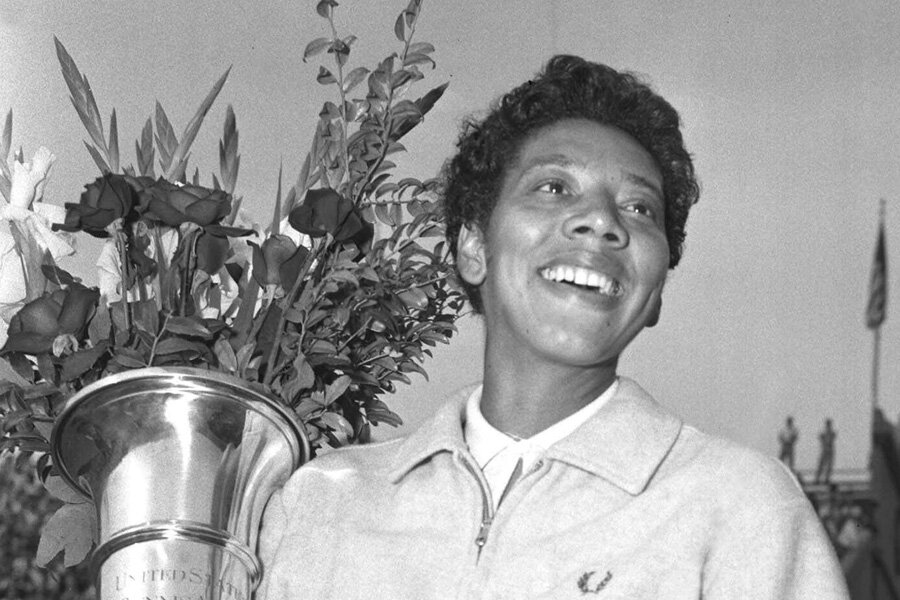Althea Gibson: Tennis legend and so much more
Loading...
Like Jackie Robinson who broke Major League Baseball's color barrier in 1947, Althea Gibson was a trailblazer, the first black to compete in the United States national tennis championship tournament three years later.
Both athletes made a name for themselves in different boroughs of New York City: Robinson for the Brooklyn Dodgers, Ms. Gibson on the tennis courts of Forest Hills in Queens.
Monday, Google published a special animated doodle in honor of Gibson's birthday, which coincides with the opening of the US Open tennis championships in New York.
Utilizing a five foot, 11-inch frame, the product of Silver, South Carolina saw her greatest triumphs in the late 1950s.
Gibson debuted in the 1950 US Nationals, reached her first finals in 1956, and won back-to-back singles championships in 1957 and '58. She also won the French Open in 1956. Gibson, who was inducted into the International Tennis Hall of Fame in 1971, won consecutive ladies singles titles at Wimbledon in 1957 and '58. She also reached the ladies final in the 1957 Australian Open.
However, at the height of her tennis prowess, Gibson found she could not make a living in the sport. Only amateur players competed in the Grand Slam tournaments. Professionals weren't allowed until tennis's "Open" era began in 1968. Prior to that, Gibson earned some money competing on a pro circuit and playing exhibition matches before Harlem Globetrotter basketball games.
After trying her hand at singing and acting, Gibson blazed another trail, becoming the first black member of the Ladies Professional Golf Association in the early 1960s. But she never enjoyed the same kind of success in golf that she had in tennis and retired in 1976.
Earlier this year, fellow LPGA golfer Marilynn Smith told a story about Gibson, her competitors, and a Texas golf course in the 1960s.
"She was the first black American to play on our tour and a great golfer, she didn't start golf until they was about 40. As you know, she was a great tennis player and I used to play some golf rounds with her and she was quite a nice person," Smith told a media gathering at the LPGA Tour's JTBC Founders Cup event this past March in Phoenix, Arizona.
"But there was a tournament in Texas, I won't mention the name of the city, that would not allow her to go into the clubhouse," Smith continued. "Lenny Wirtz was our tournament director at the time, and we all decided to move the tournament to a different venue and that's what's always been a class of the LPGA ... So we are so thrilled that Althea came and played."
After retiring as a competitive athlete, Gibson stayed involved in sports, serving as commissioner of athletics for the State of New Jersey for a number of years before health issues forced her from the sport courts and fields she loved.






